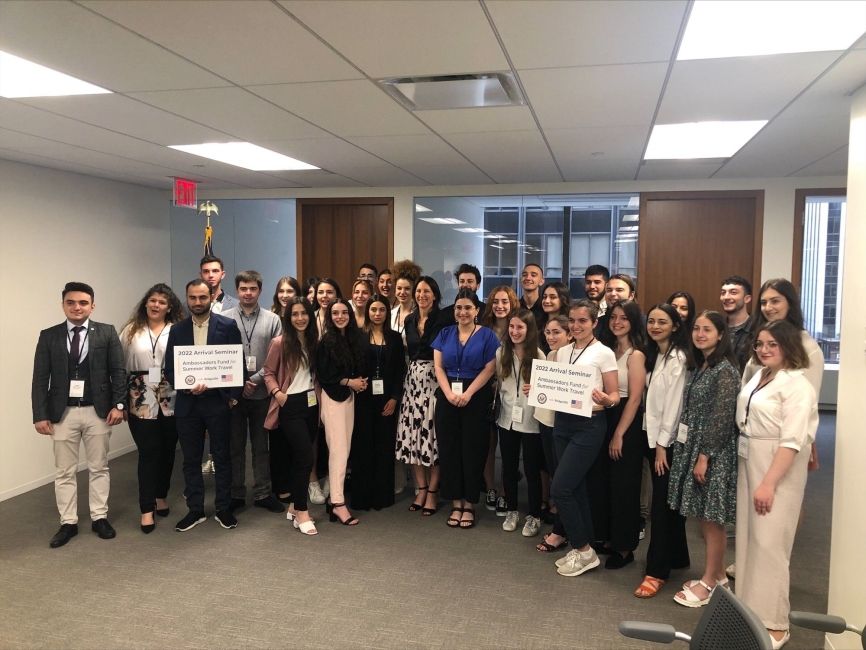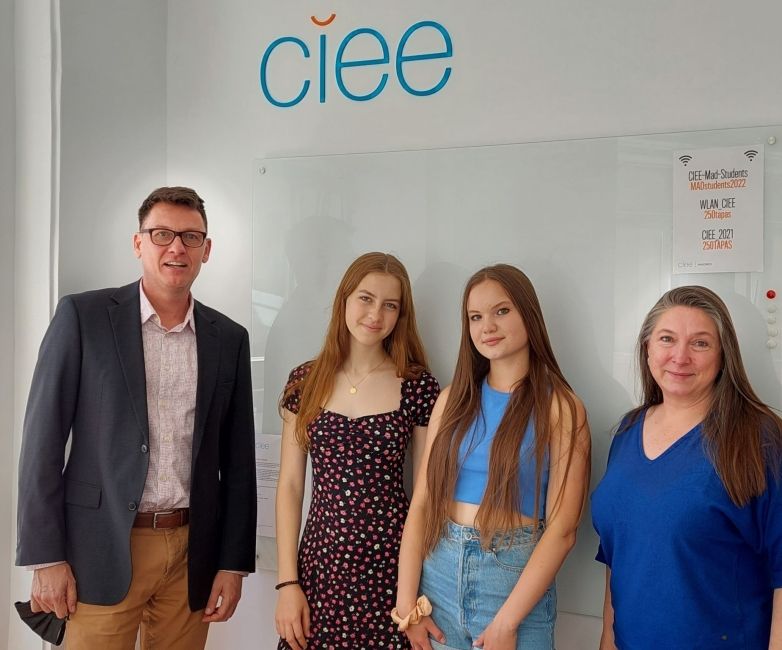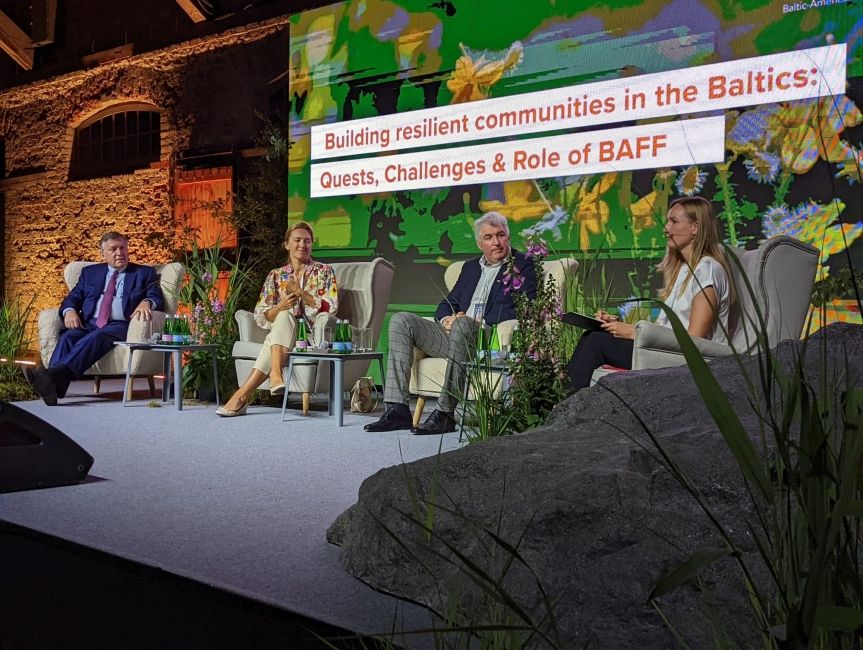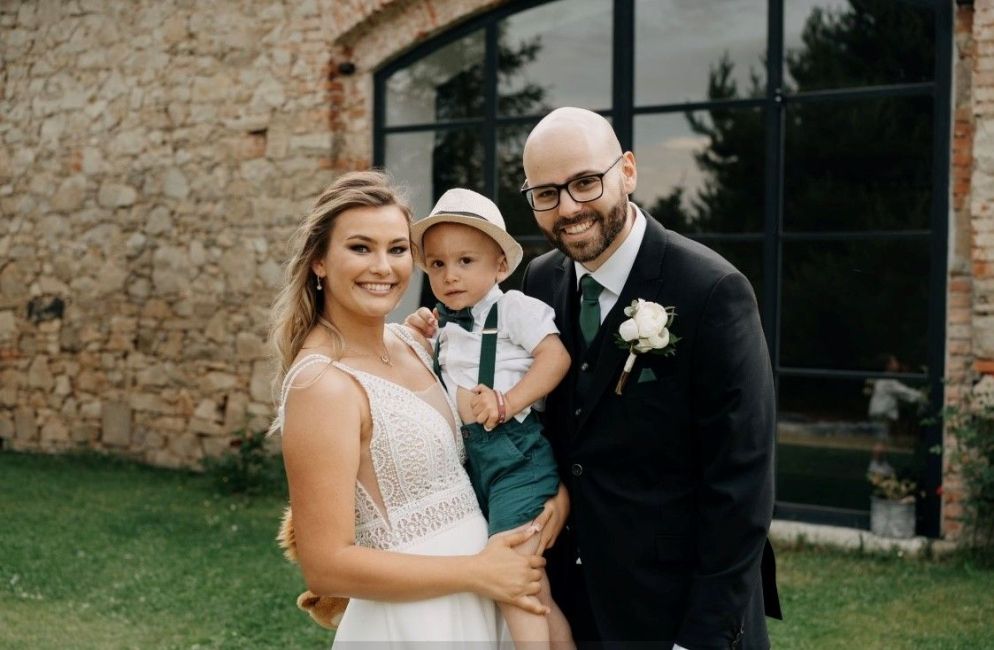Building Bridges on the Russian Border and Beyond
Since the end of World War II, CIEE’s mission has been to build bridges between different people, cultures, and nations through people-to-people exchange. For 75 years, through many chapters of geo-political unrest, CIEE has held firm in responding to times of conflict with efforts to foster mutual understanding. I write today to share with you some bridges recently built across the world, despite the shadow of Russian aggression.
Building Bridges to Ukrainian Refugees
Millions of Ukrainians have been forced to leave their country because of the Russian military invasion. CIEE’s exceptional staff around the world have been offering support for the refugees however they can – from making donations to opening their homes to displaced families.
CIEE Madrid welcomed Ukrainian refugee students staying with local families to sit in on classes and engage in academic and cultural immersion activities with CIEE students. CIEE Madrid Center Director Eero Jesurun shared that the presence of refugee students attending classes at CIEE Madrid has enhanced the experience of American students and staff alike, stating, “Our Ukrainian neighbors’ presence in our classroom has reshaped our programs by reminding us how to be brave, be kind, and be committed to creating a more socially just world.”
Many CIEE Prague staff have welcomed displaced Ukrainian families into their homes and are helping refugees find local employment. One family from Kyiv and their two dogs Mona and Lisa are living with CIEE’s Housing Director. Another CIEE staff member is hosting the grandmother of a Ukrainian student who spent the spring semester at CIEE Prague.
These intimate, person-to-person relationships across cultures are a light in the darkness of a region at war and symbolize why all of us at CIEE care so passionately about international education and exchange as a tool for advancing peace.
Building Bridges to the Baltics – Estonia, Latvia, and Lithuania
The Baltic-American Freedom Foundation (BAFF) this month celebrated its 10th Anniversary of strengthening ties between and among Estonia, Latvia, Lithuania, and the United States. These three Baltic countries share a border with Russia and were the first former Soviet states to declare independence in 1990 and commit to embracing democratic values. CIEE is honored to support BAFF’s mission to deepen the ties between the U.S. and the Baltics through programs of education and exchange centering on economic growth and democratic values.
The anniversary event held in Riga, Latvia, was attended by the BAFF Board of Directors, the President of Latvia Egils Levits, the Director of NATO StratCom Center of Excellence Janis Sarts, and the U.S. Ambassador to Latvia John L. Carwile.
Ambassador Carwile noted in his remarks how important the Baltic region is in light of Russian’s invasion of Ukraine, adding a more urgent significance to BAFF’s decade-long legacy of building bridges between Americans and young Baltic changemakers.
To mark the occasion, BAFF created an online video exhibition featuring program alumni reflecting on their experiences and their determination to continue to work for the betterment of the Baltic Region.
Building Bridges to South Caucasus Countries
Last week, CIEE co-hosted 34 BridgeUSA participants from Armenia, Azerbaijan, Bulgaria, and Georgia in New York City for the inaugural event for recipients of the U.S. Department of State-sponsored Ambassadors Fund for Summer Work Travel Scholarship.
The participants met with Deputy Assistant Secretary of State Nicole Elkon who spoke on the importance of international exchange as a tool for building bridges and advancing peace in our world. Co-sponsors CIEE and InterExchange developed a program for the three-day summit focused on intercultural learning, public diplomacy, conflict resolution, media literacy, change-making, skill-building, and storytelling.
These young leaders will spend their summer working in communities across the United States, where they will experience American values, American traditions, and American families. They will return home with more positive images of Americans and our way of life, develop American friendships that will last a lifetime, and create connections to peers from over 100 different countries.
Building Bridges of International Families
International exchange programs are notorious for bringing together young people from different cultures and different countries who fall in love and begin lifelong partnerships. Vickie Nelson, one of our longtime volunteer host mothers, has been welcoming high school students on foreign exchange programs into her home in Indiana for more than 20 years (for a total of 51 students!). She recently shared with us a wedding photo that is the culmination of a love story that started in an unusual way.
The groom, Simeon Wiehl, was an exchange student from Germany who Vickie hosted for the 2011 school year. The bride, Lucie Hrabakova, was an exchange student from Czech Republic who she hosted two years later in 2013.
Vickie shared that she has in her home a board where she keeps photos of all her former exchange students. When Lucie was an exchange student, she took a photo of the board. After she returned home to Czech Republic, she started getting in touch with the other students. “She felt like she knew them all from the stories I told,” said Vickie. “In the process, Lucie and Simeon fell in love and were married two days ago.”
Separated by two years and two different countries, somehow their time in America led to a personal bridge that will last a lifetime, providing another example of the power of people-to-people exchange.
Building Bridges to a More Peaceful World
CIEE is grateful to be doing the important work of building bridges between people, cultures, and countries with the support of all of you – CIEE's global network of international education professionals, volunteers, host families, globally-minded employers, international partners, government leaders, and other allies as well as teachers, faculty, and administrators at colleges and high schools around the world. Together, we can keep advancing peace by nurturing positive cross-cultural connections. This work has never been more important to our communities and our world.




